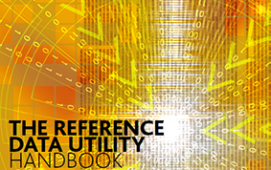Continuing the monthly Q&A where I cover some of the questions I get asked as I interact with the IntelligentTradingTechnology.com community … from Knight Capital to Correlix to wireless.
Q: How much was low latency technology to blame for the huge trading loss at Knight Capital?
A: Blame? Not at all in my book. For sure, the underlying infrastructure was engineered to deliver orders into the marketplace rapidly, but it was not responsible for making the decisions to fire off those orders. There’s no doubt something went badly wrong at the firm – we still don’t know what – and those that develop trading software need to understand the consequences of poor testing of systems. There are lessons to be learned on that side.
I guess it’s also worth exploring whether pre-trade risk controls – which Knight surely had – might be extended to stop or warn of unusual trading. Right now, those controls are pretty basic, and possibly they could be coded to look for patterns in trading instead of just ‘fat finger’ errors.
Q: You’ve been using the words “converging technologies” a lot of late, meaning low latency and?
A: I see future trading architectures for many firms drawing on a broad set of technologies – low latency, cloud and big data. See more about cloud here. And more on big data here.
Q: What do you make of TS-Associates acquisition of Correlix?
A: Congrats to Henry Young (CEO of TS-Associates) for pulling it off. And congrats to Correlix’s management and investors for doing the right thing for their customers. It seems that Correlix just got the business model a bit wrong, putting too many eggs in the latency visibility offering – RaceTeam – which soaked up a lot of upfront investment at a time when the business was not ready for it. It looks like TS-Associates picked up some good customers, technology and people for a song. Corvil has stronger competition. And Ken Marlin, who advised Correlix, got paid too 🙂
Q: There’s been more news on the wireless communications front too. Is the space heating up?
A: Definitely. There’s the news of BGC Partners and Thesys Technologies building a wireless network. And also most interestingly the rollout of Anova’s wireless – millimetre wave, not microwave – network, which could address bandwidth concerns.
Q: So this is really bad news for fibre networks?
A: It’s competition. But fibre will continue to be a huge part of the low-latency wide area connectivity solution. For bandwidth (big data), for very long hauland reach into places where wireless is difficult, and even for backup of wireless.
More questions please, to pete@low-latency.com.
Subscribe to our newsletter




